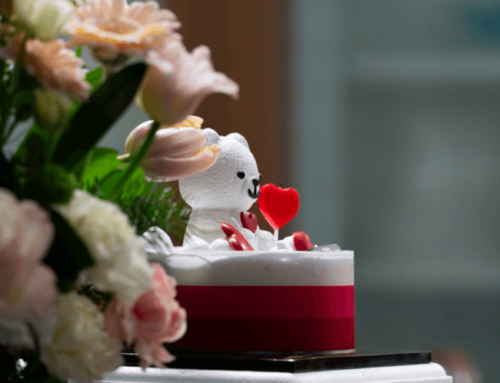Do international daters experience culture shock? We have done the research for you, so now we are going to share our findings with you.
-
What is culture shock?
So, what exactly is culture shock? Culture shock is something that everyone who goes overseas to live will experience. Often, it is the deeper cultural differences in thinking, customs and interpersonal relationships that cause this problem.
Although everyone who goes overseas to live will experience some form of culture shock, not everyone goes through all the well-known stages. While some skip stages or rush through them, others may experience some stages of cultural transition more than once. Culture shock causes feelings of anxiety and alienation. However, it’s essential to recognize it as a part of the transition process.
People who can’t answer the question, “what is culture shock?” and refuse to face it often fail to overcome it. This may result in great disillusionment. For these people, the only logical solution is returning back home before the end of their assignment. In fact, the expatriate failure rate is extremely high on all corporate levels. Between 16% and 40% of people cannot overcome culture shock and return home early. The majority of these cases (70%) happen among those on assignments in developing countries.
Most experts define culture shock as a curve-like process while many people who have experienced it say that it is really a series of waves. Positive and negative feelings often take turns and make people feel like they are on an emotional rollercoaster ride.
The intensity with which people experience culture shock depends on a lot of factors. People who receive the least support (professional and personal) are usually affected the most. Wives of workers sent overseas to work in particular often feel alone and resentful when they experience life in a new cultural environment.”
At the end of the day, culture shock, while unpleasant, is a necessary step towards integration. The key to a successful overseas assignment is to expect culture shock, to plan for it and then to roll up your sleeves and get through it.
-
How about the language barrier?
Throughout history, exploration and trade have caused various people to come into contact with each other. Because these people spoke different languages, communication was often difficult. Over the decades, the languages changed because of this contact and the groups sometimes developed lingua francas and pidgins. Today the most common lingua franca is English.
A lingua franca is a language that is used by people to communicate when they do not share a common language. Generally, a lingua franca is a third language that is different from the native language of both people involved in the communication. Sometimes as the language becomes more widespread, the people in an area will speak the lingua franca to each other as well.
A pidgin, on the other hand, is a simplified version of one language that combines the vocabulary of a number of different languages. Pidgins are often just used between members of different cultures to communicate for things like trade. A pidgin is distinct from a lingua franca in that members of the same populations rarely use it to talk to one another. It is also important to note that because pidgins develop out of sporadic contact between people and is a simplification of different languages, pidgins generally have no native speakers.
According to relationship advisors from SimplyDating.com (a reputable international dating site), Ukrainian women on their dating site are actively learning English every day so that they can communicate with western men effectively online and offline. Actually, SimplyDating.com offers online video chat as well as automatic translation services – these features are unique to this international dating platform.
-
Should married women have careers?
Many Eastern European women who are married to Australian men have found decent jobs in Australia, even though “career VS motherhood” debate is still commonplace these days.
The role of women in the workplace in Australia has changed in a series of movements that started in 1901. The first movement began in 1901 when Australia became an independent country. The new country gave women the right to vote in elections although no women were elected into the government until 1921. Women were still seen as people who should raise children and look after the housework. However, big changes happened between 1939 and 1945 during World War II. During the war, many women joined the workforce out of necessity, taking up jobs that had previously been considered only for men. Women’s participation in the workforce increased by 31% between 1939 and 1943 because women found work in factories and farms and were able to take up positions in country areas as teachers and nurses. Although many of them were expected to stop working after the War social attitudes towards what women were able to do had been changed by the experience. In the following years, from 1945 through to 1965, women went back to housework and allowed men to work. In the late sixties and early seventies, however, there was a big movement towards women’s rights and women were encouraged to work. At the time, people were worried that if women worked, there would be less jobs for men. However, this was not true. When women started working in the early seventies, they had more money to spend and because they spent more money, more jobs were created. Today the unemployment rate is the same as it was in the late sixties.
In Australia, Julia Gillard is most women’s role model. Julia Gillard was born on September 29th, 1961, in Barry, Wales to John and Moira Gillard. When Julia was five, her family moved to Adelaide, Australia, in the state of South Australia.
Gillard began her studies in law at the University of Adelaide; but in 1983, she was elected the Vice President of the Australian Union of Students (AUS). Since the AUS headquarters were in Melbourne, she had to stop her studies in Adelaide, and continued them at the Melbourne University. She became President of AUS.
After finishing her law degree in Melbourne, Gillard began working as a lawyer. In 1996, Gillard began her work in government. She was elected into the Australian government in 1998.
From 1998 until 2001, Gillard had a small role in the Australian government, but in 2001, she was given a more important job. From 2003 to 2006, she was given an even more important job and on December 24th, 2006, she was made Deputy Prime Minister. Deputy Prime Minister is the second most important person in the country (the Prime Minister is the most important person). Then in 2010, she challenged the Prime Minister and was voted to be leader of the Australian government. She became Australia’s first female Prime Minister.
Although Julia Gillard is not married with children, she is a real role model in Australia. That being said, most women who admire Julia Gillard are Australian women. Eastern European ladies who are married to Australian guys generally prefer motherhood, even though they have jobs in Australia.
“Culture shock still exists, though globalization is real and solid these days.”







[…] Previous […]